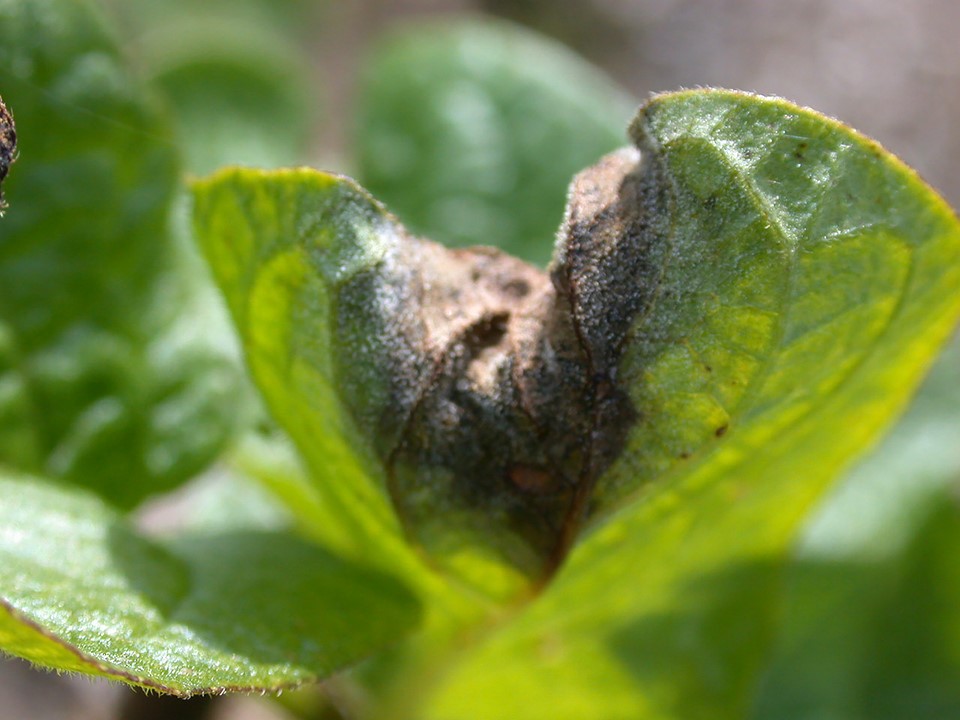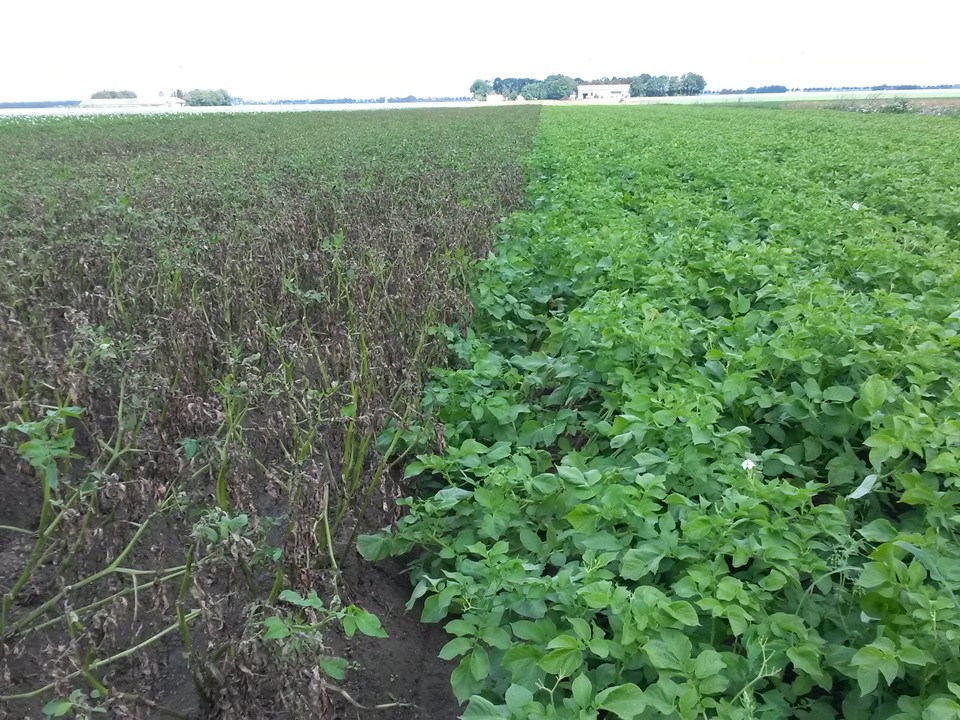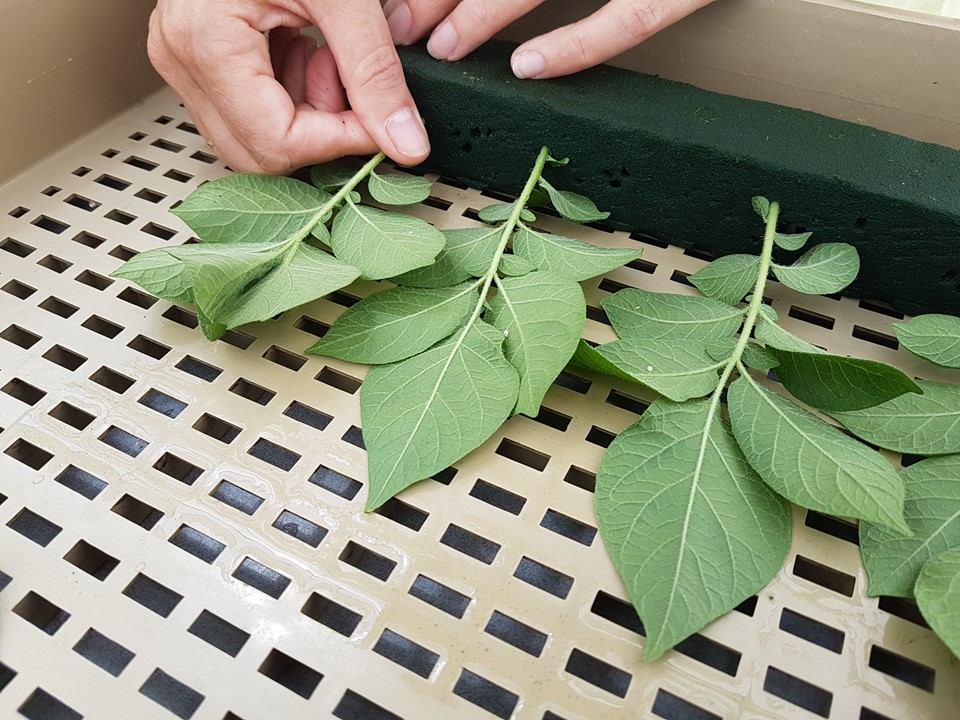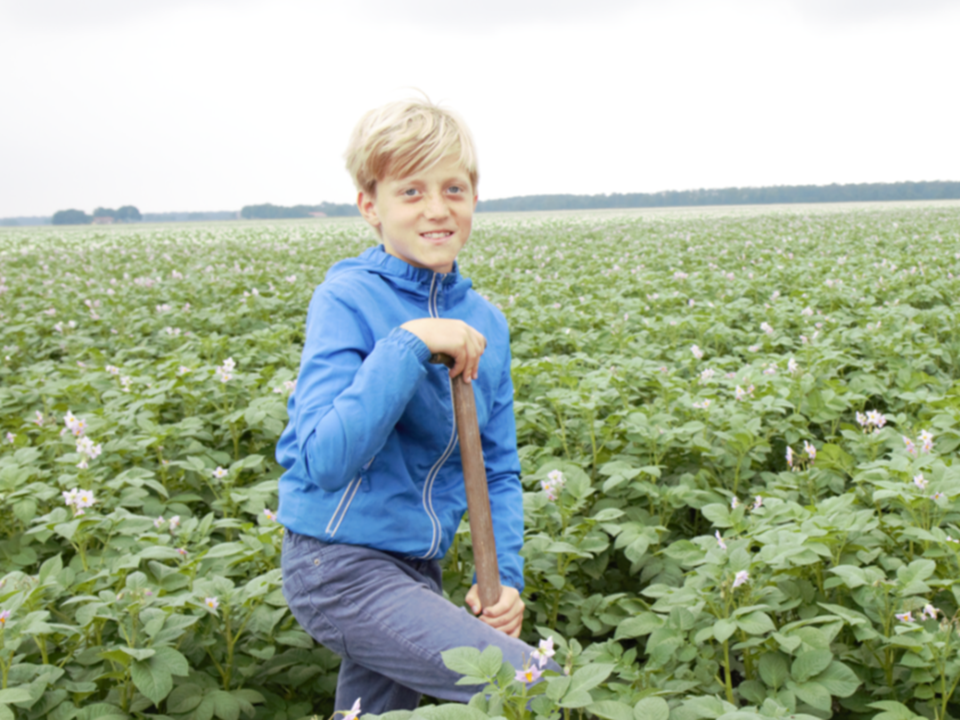Breeding for
Phytophthora
resistance

Breeding for resistance
Breeding for resistance was started in the early 20th century. Agrico Research started its breeding program in search of Phytophthora resistant varieties in the 1980s. In wild species one found an interesting source of resistance genes for the potato. People became increasingly better at introgressing these genes and preserving the other attractive characteristics of the cultivated potato. Advancing technology made it easier for breeders to recognize the results of their natural crossbreeding and selection work as working well or less well.
R gene
Unfortunately, soon after the first varieties were introduced, resistance was broken. The fungus could too easily get past the new natural defenses. Breeding has now shifted from resistance based on one resistance gene (R gene) to achieving an optimal combination of different R genes that result in a more durable level of resistance.

The fungus
The challenge for the breeder is to determine the optimal combination of R genes and all other properties that are essential for modern potato production. In a resistant variety, all cells that are affected by the fungus will die very quickly, preventing development of the fungus.
Switch off the resistance gene
Late in the ripening phase, the plant tends to switch off the resistance gene. The result is that the resistance is then no longer active with the consequence that, especially in the second half of the growing season the fungus will still stand a chance to affect the crop. In organic cultivation, this means that when resistance no longer works (sufficiently), burning the foliage is the only option that remains.
Available resistance
During the season, the fungus can also adapt to the available resistance through spontaneous mutations, as a result of which, ultimately, good resistance tends during the season not to be maintained. This is especially likely when just a single R gene is present. This does not automatically mean that the resistance in the variety will no longer work in a subsequent season when a different Phytophtora strain is active or the virulence of Phytophthora differs. This explains why certain Next Generation varieties are still affected during the season, without reaching full maturity.
Resistance versus chemical agents
At present, Phytophthora is mainly controlled by chemicals which have to be applied repeatedly. During a growing season, the crops have to be sprayed up to 17 times, depending on the climate zone, the course of the season and the earliness of the varieties grown.
As a result of this, up to 10-20% of the total production costs are used for Phytophthora control, based on the costs of the chemicals and their use (machines, labor, and fuel). In areas where growers have no access to chemicals, the yields are generally 25% lower than those in Northern Europe or the US (Haverkort et al., 2009).
Despite the availability of chemicals, the spraying cycle can be disrupted by weather conditions, leaving the crop temporarily unprotected. In case of heavy disease pressure then Phytophthora can still lead to crop loss and so yield loss, because the growing season is shortened and the storability of the 'immature' tubers is reduced. The total global yield losses as a result of Phytophthora are estimated to be 16% (Haverkort et al., 2009).


Screening for Phytophthora resistance
Screening for Phytophthora resistance can be done using individual leaves of a plant, the so-called detached leaf assay, or an intact plant test through field screening. The leaf assay is a relatively quick laboratory test, where individual leaves from greenhouse plants are inserted into floral foam (or oasis).
The underside of each leaf is infected with two drops of water containing Phytophthora spores and then incubated under optimal conditions, i.e. high humidity, sufficient light and an optimal temperature (17˚C). After 6 days, the leaves show a small necrotic spot (= resistant) or they are covered with mycelium (= susceptible).
Check how to recognize Phytophthora(late blight) - download the poster or flyer.
New research
Developing new Next Generation varieties is a continual process. Several resistance genes are used and combined to this end. This development is expected to ensure that varieties are free from Phytophthora more often and in several growing areas until the end of the growing season.
In order to use the resistance, it isn’t important which strain of Phytophthora affects the crop, but it is important whether this has virulence for the resistance gene present in the cultivated Next Generation variety.
To make optimal use of the varieties, it is therefore important to understand which virulence occurs in which growing area and how this moves between and within the growing areas and across the seasons.
However, as yet little is known about this, which is why Agrico Research collects Phytophthora isolates from affected field plots throughout the Netherlands and, if possible, from other countries too, in order to gain a clear understanding of the virulence that is actually present.
The long-term strategy of Agrico Research is to produce resistant varieties for all segments that can compete with existing varieties on the market from conventional cultivation.

